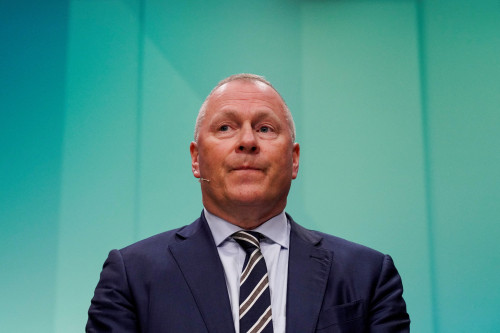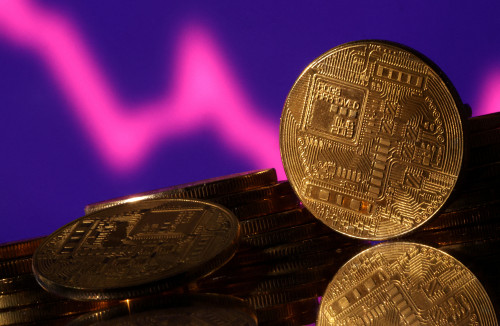By Lindsay Dunsmuir
(Reuters) -U.S. inflation tracked sideways in April and consumer spending weakened, mixed signals for the Federal Reserve that provided little clarity on whether the U.S. central bank will be able to begin cutting interest rates in September.
The data suggested the elevated pace of price increases could last longer than expected but also the prospect that more tepid consumer spending may keep a lid on prices increases in the months ahead.
“People have been pinched for a while, and it’s likely starting to show … This cooling is encouraging for slower inflation in the coming months,” said Elizabeth Renter, a senior economist at NerdWallet.
The personal consumption expenditures (PCE) price index increased 0.3% last month, the Commerce Department’s Bureau of Economic Analysis said on Friday, matching the unrevised gain in March.
In the 12 months through April, the PCE price index rose 2.7% after advancing at the same pace in March. Economists polled by Reuters had forecast it would climb 0.3% on the month and 2.7% on a year-on-year basis. The PCE price index is one of the inflation measures tracked by the U.S. central bank for its 2% target. Monthly inflation readings of 0.2% over time are needed to bring inflation back to target.
Consumer spending, which accounts for more than two-thirds of U.S. economic activity, increased by 0.2% in April after a downwardly revised 0.7% rise in March. Revised gross domestic product data released on Thursday showed consumer spending moderating to a 2.0% pace in the first quarter from the brisk 3.3% pace in the October-December period.
Yields on U.S. Treasury securities fell to their lowest levels in about two weeks following the release of the inflation report on Friday, while stocks reversed early gains and slid for a third consecutive day. The dollar was broadly weaker.
Traders of futures tied to the Fed policy rate added to bets of roughly even odds that the central bank will begin to cut rates in September and boosted the odds of a second rate cut in December to about the same probability.
Goods prices increased 0.2% in April after edging up 0.1% in the prior month, the PCE report showed. Services prices rose 0.3%, down from 0.4% in March. Housing and utilities remained the largest contributors to last month’s increase. Energy prices rose 1.2% and food prices decreased 0.2%.
The Fed has kept its benchmark policy rate in the 5.25%-5.50% range for the past 10 months, having been stung by several stronger-than-expected inflation and labor market readings this year after more encouraging data in the fourth quarter of last year. While inflation still remains sticky, job gains in April were at the lowest level in six months.
REAL SPENDING FALLS
The Fed has raised borrowing costs by 525 basis points since March 2022 in a bid to cool demand across the economy. Financial markets initially expected the first rate cut to come in March, which then got pushed to June and now to September.
Stripping out the volatile food and energy components, the PCE price index increased 0.2% in April after rising 0.3% in March. Core inflation increased 2.8% on a year-on-year basis in April, matching March’s advance.
PCE services inflation excluding energy and housing rose 0.3% after a 0.4% gain in March. Policymakers are closely monitoring the “super core” inflation to gauge their progress in fighting inflation.
Inflation-adjusted personal spending declined 0.1% in April, after an increase of 0.4% in March. That reflected a 0.4% decrease in real goods spending in April, down sharply from a 0.9% increase in March, and a 0.1% rise in real services spending, down from a 0.2% increase in the prior month.
“We are in a be-careful-what-you-wish-for moment,” said Chris Zaccarelli, chief investment officer at Independent Advisor Alliance, about the pullback in consumer spending and its potential to lead to lower inflation. “If … the Fed is able to cut slowly as a result, then that will be good for markets. However, if consumer spending – and the economy – slows too quickly, then corporate profits and stock prices will go down much more quickly than the Fed will be able to cut rates.”
(Reporting by Lindsay Dunsmuir; Editing by Chizu Nomiyama and Paul Simao)




